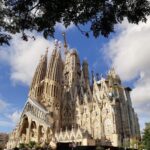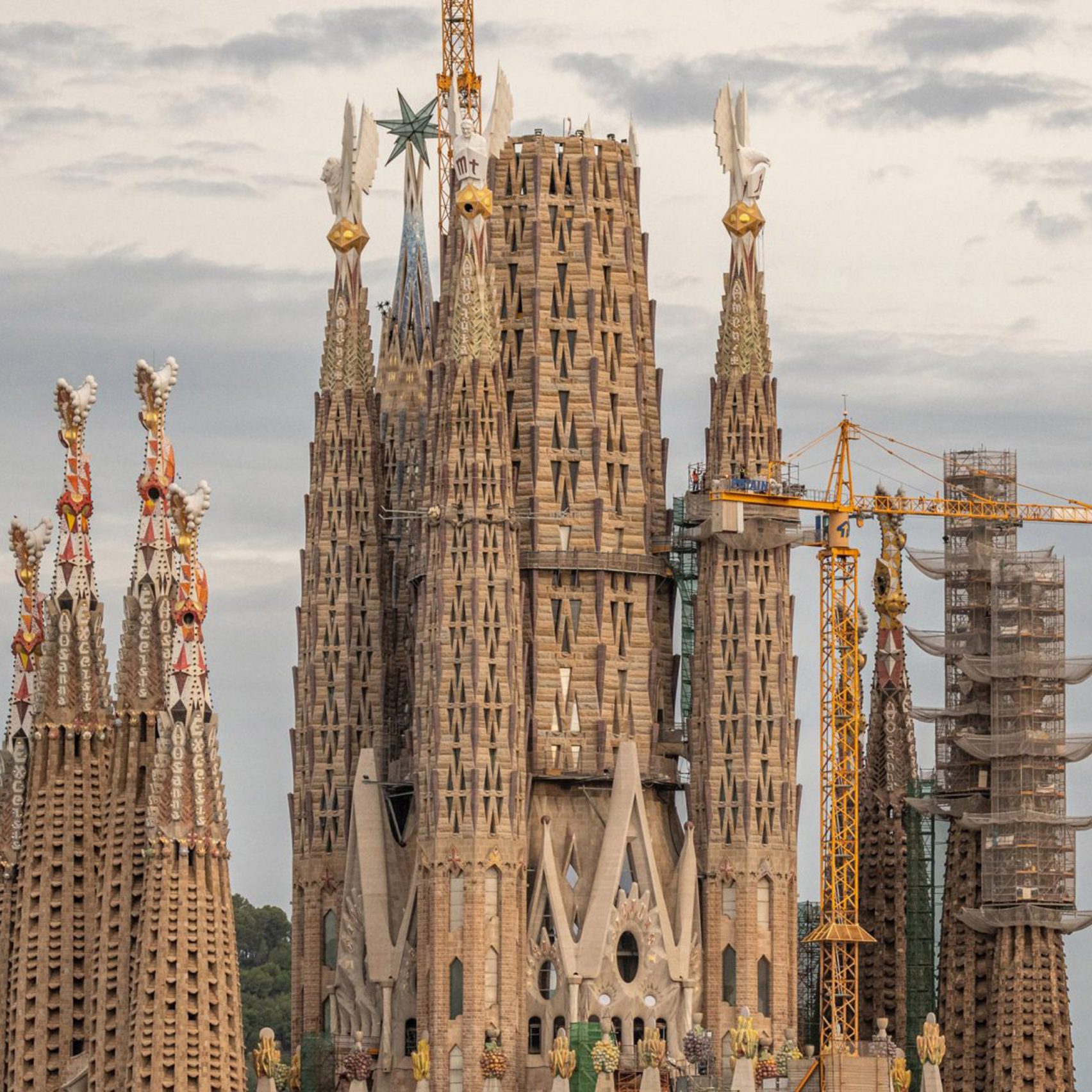
The Sagrada Familia, an iconic masterpiece designed by Antoni Gaudí, has captivated millions of visitors with its intricate architecture and unique design. However, its long and complex construction history raises a pressing question for many: **The Sagrada Familia in Barcelona: When Will it Be Finished?**
Despite being under construction since 1882, the basilica continues to evolve, reflecting both Gaudí's visionary ideas and modern advancements in engineering. As the anticipated completion date draws closer, curiosity grows about the final result and the legacy this architectural wonder will leave behind.
The History and Significance of the Sagrada Familia in Barcelona
The history of the Sagrada Familia is as intricate as its architecture. Construction began in 1882, spearheaded by architect Francisco de Paula del Villar, but it was Gaudí who took over in 1883, transforming it into a project infused with his unique style. Gaudí envisioned the basilica as a testament to his faith, imbuing every detail with religious significance and personal symbolism. This blend of spirituality and artistry has made it a focal point of Barcelona's cultural heritage.
The significance of the Sagrada Familia extends beyond its architectural marvel. It symbolizes the enduring nature of faith and perseverance. Some key aspects of its importance include:
- Cultural Identity: A national symbol of Catalonia and an emblem of Gaudí's genius.
- Artistic Innovation: A pioneer in modernist architecture, showcasing organic forms and innovative techniques.
- Community Impact: A major tourist attraction that contributes to the local economy and community engagement.
As a UNESCO World Heritage site, the Sagrada Familia reflects the intersection of art and spirituality, attracting millions each year. Its detailed facades and towering spires encapsulate Gaudí's vision, merging nature with architecture. The basilica serves not only as a place of worship but also as an ongoing legacy of creativity and dedication to the craft.
The construction timeline of the Sagrada Familia has faced numerous challenges, including wars and financial setbacks. Below is a simplified timeline of key milestones in its history:
| Year | Event |
|---|---|
| 1882 | Construction begins under Francisco de Paula del Villar. |
| 1883 | Gaudí takes over as the chief architect. |
| 1936 | Work halts due to the Spanish Civil War. |
| 2026 | Projected completion date for the basilica. |
Current Construction Status of the Sagrada Familia: Key Milestones
The current construction status of the Sagrada Familia is a topic of great interest, particularly as the anticipated completion date approaches. Significant milestones have marked its journey, showcasing the evolution of this architectural marvel. Among the key milestones, we find:
- 2010: The consecration of the basilica by Pope Benedict XVI, recognizing its spiritual importance.
- 2018: The centenary of Gaudí's death, which brought a renewed focus on the completion of his vision.
- 2020: The installation of the final stone of the Nativity facade, a crucial step in the construction process.
In recent years, technological advancements have played a pivotal role in accelerating construction efforts. The use of modern machinery and computer-aided design has allowed artisans to recreate Gaudí’s intricate designs with greater precision. This has been essential in maintaining the integrity of the basilica's artistic vision while adhering to contemporary safety and engineering standards.
As of now, the Sagrada Familia is approximately 70% completed, and the focus remains on the interior and exterior finishing touches. The architects aim to enhance the visitor experience while preserving the spiritual ambiance that Gaudí envisioned. With a projected completion date of 2026, the construction team is confident they can deliver a masterpiece that honors Gaudí's legacy.
In summary, the Sagrada Familia continues to be a symbol of perseverance and innovation. Each milestone achieved reflects the dedication of countless workers and artists who strive to complete Gaudí's extraordinary vision, making it a lasting testament to architectural genius. The journey towards its completion is as significant as the basilica itself, marking the intersection of history, art, and faith.
Predicted Completion Date for the Sagrada Familia: What to Expect
The predicted completion date for the Sagrada Familia is set for 2026, coinciding with the centenary of Gaudí’s death. This target has generated significant anticipation among both locals and tourists who eagerly await the basilica’s final unveiling. The completion will not only honor Gaudí's original vision but also enhance the cultural and architectural landscape of Barcelona.
As the construction progresses, several factors influence the anticipated timeline, including:
- Funding: Continued financial support is crucial for maintaining the momentum of construction.
- Technological advancements: New techniques and tools are streamlining the building process, allowing for faster completion.
- Artistic fidelity: Ensuring that each element remains true to Gaudí’s intricate designs takes time and expertise.
Visitors can expect to see remarkable changes in the Sagrada Familia's structure as the finish line approaches. The focus is now shifting towards the interior artistry and the unique features that will complete the basilica. Some of the anticipated highlights include:
- The Glory Facade: The last of the three grand facades, showcasing the final artistic expressions of Gaudí's vision.
- Interior enhancements: The use of light and color through stained glass, creating a spiritual atmosphere.
- Visitor experience improvements: New facilities and guided tours that will offer deeper insights into the basilica's history and significance.
Ultimately, the completion of the Sagrada Familia will represent not only a significant architectural achievement but also a symbol of perseverance and dedication. As the date approaches, both locals and tourists will witness the culmination of over a century of work, making the Sagrada Familia an even more profound landmark in Barcelona’s cultural heritage.
Architectural Features of the Sagrada Familia: A Unique Blend of Styles
The architectural features of the Sagrada Familia showcase a **unique blend of styles**, reflecting the visionary mind of Antoni Gaudí. Drawing influences from **Gothic** and **Art Nouveau**, the basilica exhibits soaring spires that mimic nature, alongside organic forms that seem to grow from the ground. This harmonious fusion creates a structure that feels both timeless and avant-garde, transcending traditional architectural boundaries.
One of the most striking elements of the Sagrada Familia is its intricate facades, each telling a different story and designed to evoke emotion. The **Nativity Facade**, for example, is adorned with scenes of birth and nature, while the **Passion Facade** embodies the suffering of Christ through stark, angular forms. These contrasting styles illustrate Gaudí’s ability to convey profound spiritual messages through architecture, creating an immersive experience for visitors.
Moreover, the basilica's interior is a masterpiece in itself, designed to mimic a forest with its towering columns that resemble trees, branching out to support the roof. This innovative approach not only enhances the structure's stability but also creates a serene atmosphere filled with light. The play of colors from the stained glass windows adds to this effect, bathing the interior in vibrant hues that change throughout the day.
In summary, the Sagrada Familia stands as a testament to Gaudí’s **brilliant imagination** and his deep connection to nature and spirituality. Its architectural features do not just serve aesthetic purposes; they embody a philosophy that blends faith, art, and the natural world, making it a **one-of-a-kind** landmark that continues to inspire awe.
Visitor Information: How to Experience the Sagrada Familia in 2023
To fully experience the Sagrada Familia in 2023, visitors are encouraged to book tickets online in advance. This approach not only ensures entry but also helps to avoid the often lengthy queues at the site. Tickets come in various options, including guided tours, which provide deeper insights into Gaudí's architectural genius and the basilica's history, enhancing the overall visit.
Once inside, take the time to explore the stunning interior of the basilica. The play of light through the stained glass windows creates a mesmerizing atmosphere, changing throughout the day. Visitors can also admire the unique columns designed to resemble trees, which offer a sense of being in a forest, further emphasizing Gaudí's connection to nature. Remember to allocate sufficient time to appreciate the details and significance of each architectural element.
For those interested in a more immersive experience, consider joining a guided tour that delves into the symbolism and artistic intent behind the Sagrada Familia. These tours often include access to restricted areas, such as the towers, which offer panoramic views of Barcelona. Audio guides are also available and provide informative commentary, making the visit both educational and enriching.
Finally, be sure to check the official website for any updates regarding special events or exhibitions that might be taking place at the Sagrada Familia during your visit. Engaging with these events can provide a unique perspective on this architectural masterpiece and its ongoing construction journey, making your experience even more memorable.
The Impact of the Sagrada Familia on Barcelona's Cultural Landscape
The Sagrada Familia has had a profound impact on Barcelona's cultural landscape, serving as a symbol of the city's identity and a beacon of artistic innovation. Its unique architectural style has not only inspired local artists but has also drawn international attention, positioning Barcelona as a vital hub for cultural tourism. The basilica's continual evolution engages the public's imagination, inviting both admiration and reflection on the intersection of faith and creativity.
Furthermore, the Sagrada Familia has become a crucial element in fostering community pride and identity. It plays a significant role in various cultural events and celebrations throughout the year, such as:
- Religious ceremonies: Hosting significant spiritual events that connect locals with their heritage.
- Art exhibitions: Featuring works inspired by Gaudí and the basilica, promoting artistic dialogue.
- Community festivals: Engaging residents and visitors alike in the ongoing story of the basilica.
This iconic structure also generates considerable economic benefits for the city. Its status as a UNESCO World Heritage site attracts millions of tourists annually, leading to:
- Job creation: Opportunities in tourism, hospitality, and local businesses.
- Investment in local infrastructure: Enhancements in public transport and amenities to accommodate the influx of visitors.
- Cultural exchange: Encouraging interactions between locals and tourists, enriching the city's social fabric.
In summary, the Sagrada Familia is not merely an architectural achievement but a living part of Barcelona's cultural heritage. Its ongoing construction and the eventual completion in 2026 will undoubtedly further amplify its influence, ensuring that this magnificent basilica remains a centerpiece of cultural dialogue and artistic expression for generations to come.
 Sagrada Familia Barcelona: What Is It and Why You Must Visit
Sagrada Familia Barcelona: What Is It and Why You Must VisitIf you want to know other articles similar to The Sagrada Familia in Barcelona: When Will it Be Finished? you can visit the category WHERE YOU CAN GO.
Leave a Reply










Read more!